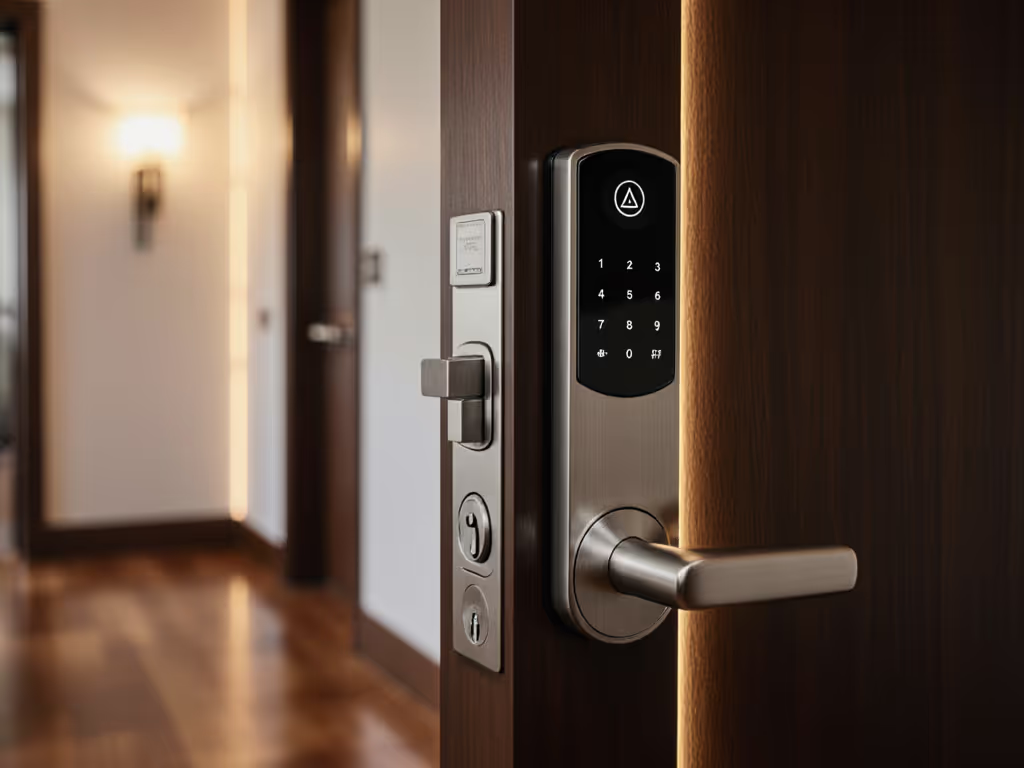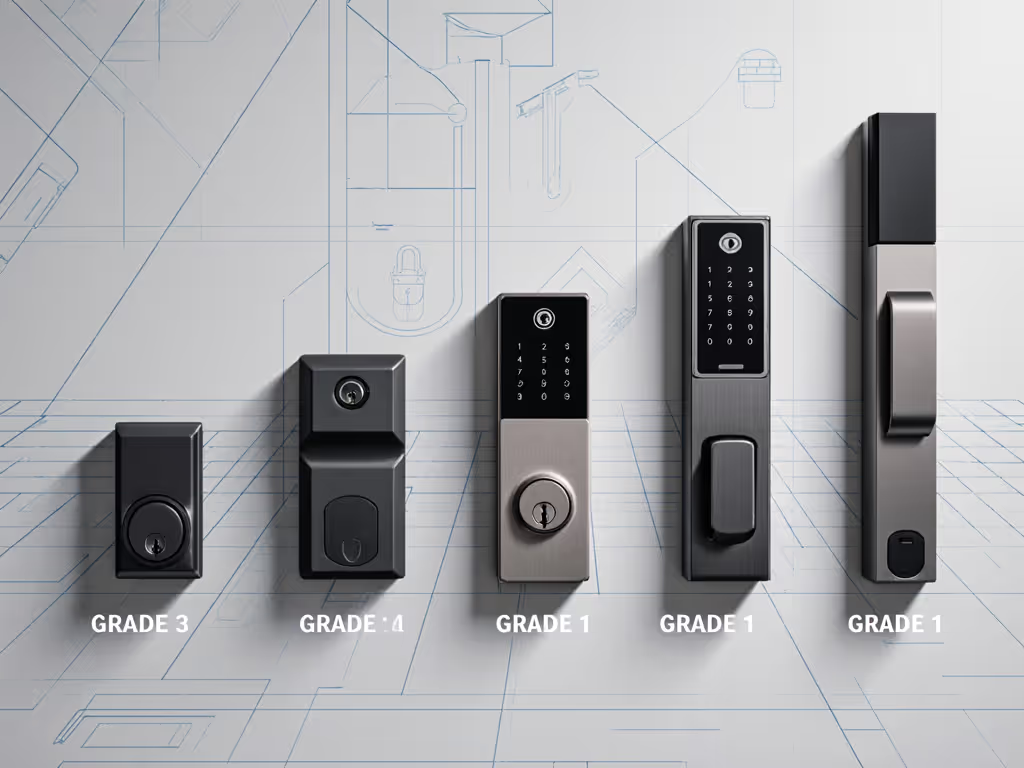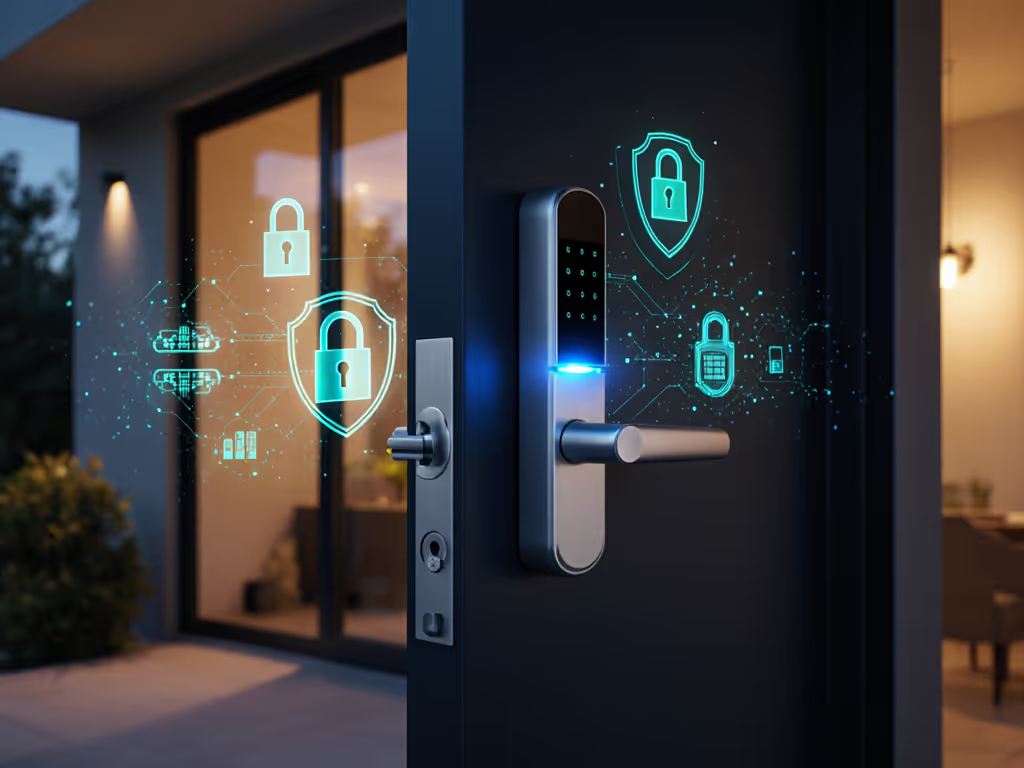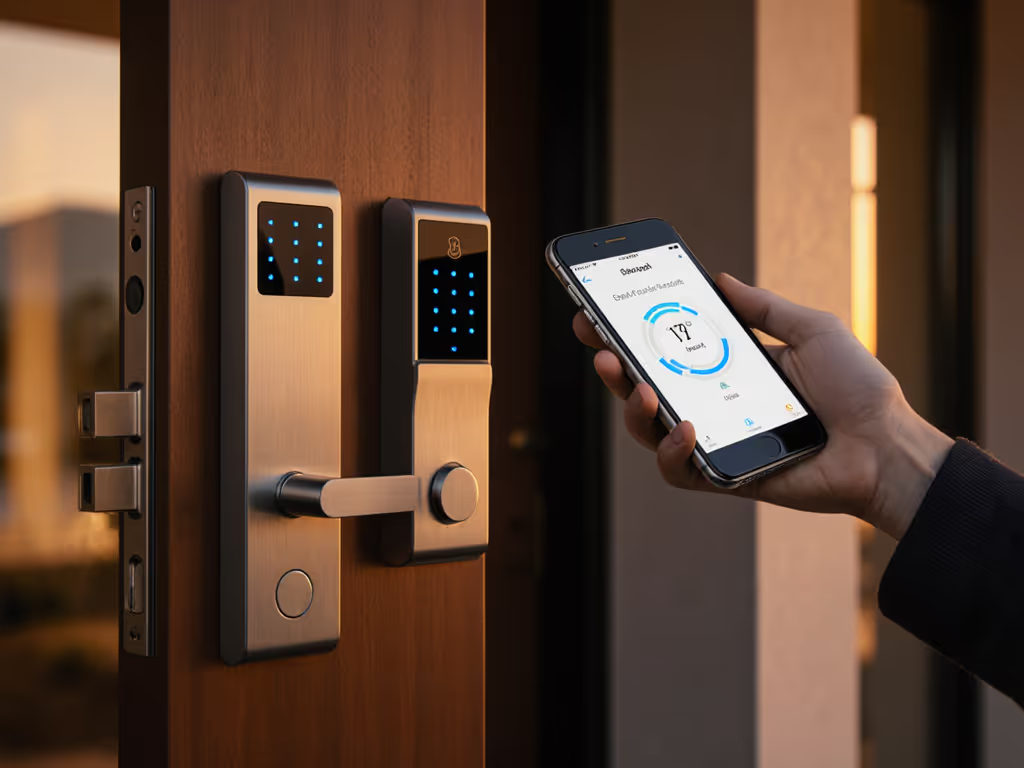
ANSI BHMA Grades Explained: What Smart Lock Certifications Mean

When researching smart lock security certifications, few aspects matter more than understanding ANSI BHMA grades. These standards determine whether your lock can withstand daily use while maintaining security integrity (critical for anyone prioritizing both physical safety and digital privacy). If you've ever wondered what "Grade 1" or "AAA certified" truly means on a smart lock product page, you're not alone. For a quick primer on how smart door locks work and key terms, see our smart lock fundamentals guide. Many homeowners and property managers mistakenly assume all certified locks offer equivalent protection, only to discover too late that their Grade 3 lock can't handle the demands of frequent guest access or platform-agnostic workflows.
The Hidden Problem With Smart Lock Specifications
Most consumers don't realize their $300 smart lock might have a Grade 3 mechanical core, the same rating used for closet doors in residential buildings. When I consulted with a boutique vacation rental operator last winter, she had installed several "premium" smart locks only to find they failed after 200,000 cycles, well below the turnover rate of her properties. Her guests regularly arrived to find jammed deadbolts or unresponsive keypads, forcing last-minute manual overrides. This isn't just an inconvenience; it's a privacy risk when you're forced to share physical keys or admin credentials to resolve check-in failures. Poorly graded hardware directly undermines the security grade comparisons you're making across brands.
Guests shouldn’t be your QA. Your lock should perform reliably through hundreds of access cycles without requiring constant troubleshooting or exposing guest data during failures.
Many smart lock buyers focus solely on app features while overlooking the mechanical foundation. Yet a lock's physical durability directly impacts:
- How reliably it handles daily use for families or high-traffic rentals
- Whether time-bound codes work consistently until expiration
- The integrity of your local audit trail during power or network interruptions
- Your ability to maintain cleaner and vendor access without mechanical failures
Why Certification Testing Methodology Matters More Than You Think
The ANSI/BHMA grading system isn't marketing fluff, it is a rigorous laboratory standard measuring six critical dimensions:
- Operational Performance: How smoothly the latch engages (critical for misaligned doors)
- Cycle Testing: Total operations before failure (Grade 1: 1 million cycles vs. Grade 3: 200,000)
- Strength: Resistance to forced entry attempts (Grade 1 handles 360 lbs vs. 150 lbs for Grade 3)
- Security: Protection against picking, drilling, and impact attacks—see our smart lock vulnerabilities testing guide for evaluation criteria.
- Material Evaluation: Component durability under stress
- Finish Testing: Long-term resistance to environmental wear
Consider the cycle test: A Grade 1 lock must operate flawlessly for 1 million cycles (equivalent to 20 to 30 years of daily use for a single-family home). But for short-term rentals? That's barely six months of operation. I've seen properties with only 15 units overwhelm Grade 2 locks in under two years due to constant guest turnover. The certification testing methodology reveals what manufacturers won't highlight in marketing materials: a "smart" lock can have cutting-edge connectivity while using Grade 3 mechanics that fail under real-world usage.
Smart Lock Certification Standards Decoded
Despite common confusion, ANSI/BHMA grades apply specifically to the lock mechanism, not the electronic components. Here's how the grades translate to real-world scenarios:
| Test Category | Grade 1 | Grade 2 | Grade 3 |
|---|---|---|---|
| Cycle Life | 1,000,000 | 400,000 | 200,000 |
| Pull Strength | 360 lbs | 150 lbs | 150 lbs |
| Security Impact | 10 blows at high force | 5 blows | 2 blows |
| Best For | Commercial buildings, STRs, high-traffic homes | Residential homes, infrequent rentals | Interior/closet doors |
Crucially, Grade 1 locks maintain functionality through extreme stress scenarios that would compromise lower grades. During my own migration from platform-dependent locks to local-first systems, I discovered that Grade 1 mechanisms continued operating during extended power outages when cheaper alternatives jammed, ensuring our time-bound codes still worked without cloud dependency. If offline reliability is a priority, compare smart locks that work offline across leading brands.
There's also confusion around "AAA" ratings mentioned on some product pages. This refers to the BHMA's separate grading system for finish, cycle life, and security components, where A represents the highest performance in each category. A true AAA-rated lock performs at the highest level across all three dimensions, a meaningful distinction when selecting hardware for primary entry points.

Kwikset Halo Wi-Fi Smart Lock
Making Informed Choices for Privacy-Conscious Deployments
Understanding smart lock certification standards becomes especially critical when balancing security with privacy requirements. Many cloud-dependent systems compensate for weak mechanical components with software features, until the internet connection fails or the platform changes its API. True resilience requires both:
- Hardware foundation: Grade 1 or 2 mechanism for exterior doors
- Local processing capability: Operations that continue during outages
- Transparent data practices: No hidden telemetry in the name of "security"
When evaluating smart locks, ignore marketing claims about "military-grade encryption" if the physical lock can't handle basic operational demands. For implementation best practices, follow our local encryption and offline safety guide. Ask instead:
- What ANSI/BHMA grade applies to the mechanical components?
- How does the lock perform during the certification testing methodology's security tests?
- Does the electronic system maintain functionality during extended check-in windows without cloud connectivity?
The most reliable systems combine Grade 1 mechanics with local processing, ensuring guests glide in; your data stays home, not the cloud. During that holiday weekend when platform rate limits blocked six arriving guests across my properties, it was the Grade 1 mechanical cores paired with local time-bound codes that kept check-ins smooth while others scrambled with cloud-dependent alternatives.
Practical Application for Your Property
Your grading requirements depend entirely on usage patterns:
- Single-family homes: Grade 2 provides adequate durability for most residences
- Short-term rentals: Grade 1 is essential for exterior doors with frequent turnover
- Cleaner and vendor access points: Consider Grade 1 even for secondary entrances if access occurs weekly
Never install Grade 3 locks on exterior doors, as these are designed for interior applications where security isn't critical. For door-location-specific picks, see our exterior vs interior smart lock guide. And when comparing products, verify whether the grade applies to the entire lock assembly or just specific components. Some manufacturers highlight "Grade 1 certified" while applying the rating only to the deadbolt, not the latch mechanism.

Conclusion: Beyond the Grade Label
ANSI BHMA grades provide essential mechanical benchmarks, but they're just one piece of the security puzzle. For privacy-conscious deployments, always pair appropriate mechanical grading with:
- Local processing capabilities that maintain operation during outages
- Transparent data practices that respect your right to host without surveillance
- Platform-agnostic workflows that prevent vendor lock-in
While an IP rating might indicate water resistance, and the certification testing methodology reveals build quality, remember that true security combines physical durability with digital integrity. The lock grade tells you how long the mechanism will last, and your implementation determines whether it protects privacy equally.
For those managing short-term rentals or privacy-sensitive homes, I've created a detailed checklist comparing specific lock models against both ANSI standards and privacy requirements. It includes vetted options that maintain Grade 1 mechanical security while processing access codes entirely on-device (no cloud dependency required). Download the Smart Lock Selection Guide to ensure your next installation delivers both physical security and digital autonomy.



